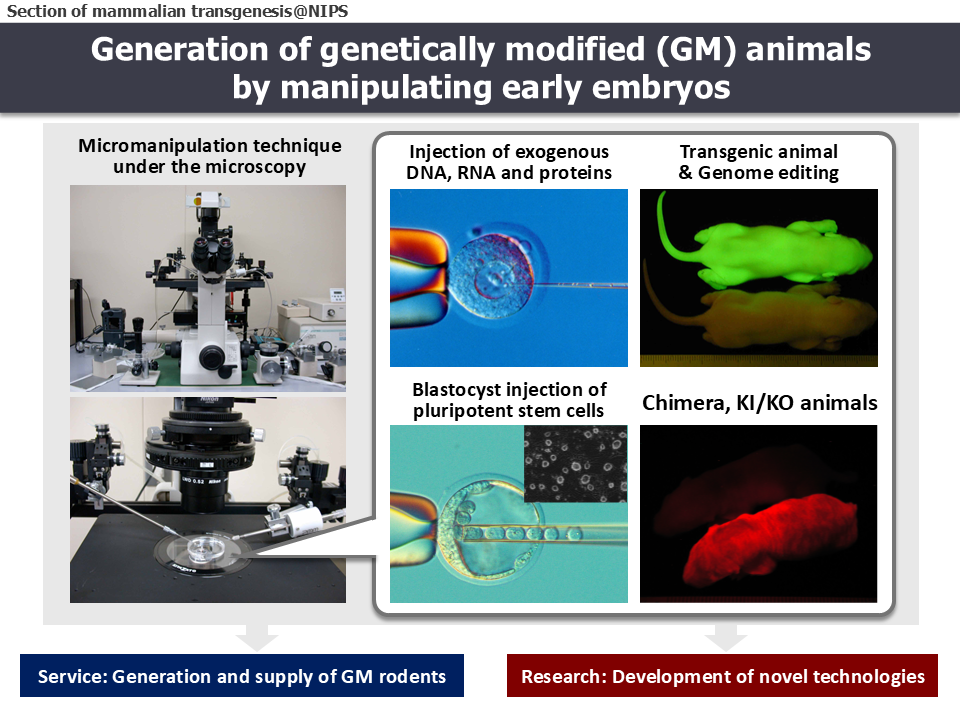Genetically modified animals such as transgenic and knockout animals are essential tools for current life science research. In particular, recent progress on gene editing technologies including CRISPR/Cas9 system has enabled us to generate desired such animals more efficiently and rapidly. Our facility, Section of Mammalian Transgenesis, routinely generates a variety of genetically modified mice and rats according to requests from internal and external laboratories. In addition, we have developed novel reproductive and developmental technologies using early rodent embryos and stem cells. One of our current projects is an application of our techniques to regenerative medicine. Recently, as collaborative research, we have established “blastocyst complementation” method which can create a specific organ from pluripotent stem cells (PSCs) in organ-deficient animals. In addition, we have successfully induced functional germ cells from rat PSCs in vitro, leading to the birth of healthy offspring. Through developing new technologies and generating model animals in various mammalian species, we aim to understand the underlying mechanisms on stem cell self-renewal/differentiation, early embryo development and organogenesis, which would contribute to future regenerative medicine and reproductive medicine as well as life science research.

Fig.1 Generation of genetically modified animals. Under the microsope, early embryos and pluripotent stem cells are manually manipulated to generate transgenic animals, chimeras, and knock-in/-out animals.